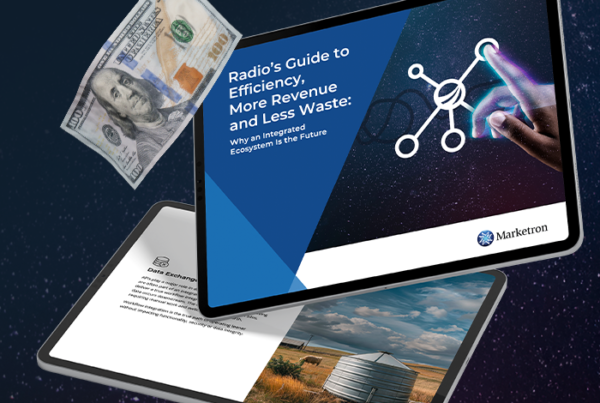Linear TV isn’t dead; it’s not even sick! Even though some in the industry (and outside of it) have strong opinions otherwise, the data tells a different story. In the 2023 Media Comparisons Study conducted by GfK and commissioned by TVB, there’s much optimism around linear TV’s performance.
The study explored how people consume traditional, streaming and digital media. It sought to discover the reach of each, time spent, trustworthiness and more. The research also addressed how each type of media drives a person to learn about a product or service.
Let’s look at the findings and how they can drive your sales pitch for advertisers thinking of forgoing TV advertising.
The Media Comparisons Study Findings
Linear TV performed well in many categories and provided great insights into the modern consumer’s relationship with media.
Reach and Time Spent
TV had the greatest reach of any platform. Specifically, broadcast TV was 76% effective in reaching people 18 and older. It outperformed other media categories that many advertisers assume have better reach, including social media and search.
Regarding reach, the study also concluded that broadcast websites added more of it for linear TV over cable and streaming, with a 5.9% extended reach. In comparison to streaming, which is only growing its user base, the study noted that 46% of respondents stream with no ads, so there’s no way for advertisers to reach this group.
On time spent, TV was again the top choice, with people spending an average of 5 hours and 31 minutes watching TV, of which 3 hours and 37 minutes is with broadcast TV. You may find this surprising, especially since we often hear that everyone spends more time on social media or streaming, but those media formats were significantly lower in time spent.
Influencing Purchasing Decisions
For this part of the study, the survey asked participants to select the type of advertising medium they felt most influenced their purchasing decisions. TV was No. 1 at 23.6%, with social media second at 17.1%. Further, TV ads inspire people to do further research online. It’s a case of TV lifting digital tactics. For example, someone sees an ad about a service or product that interests them, but maybe they don’t recall the company name. They head online with a generic search. If the company is running SEM (search engine marketing) campaigns, their ads pop up and remind the customer, which could lead to a conversion.
Trust and More Viewing Habits
The study also reaffirmed the trustworthiness of local TV. People turn to broadcast TV for local news because of this. Previous data relayed that 75% of U.S. adults trust local news. That trend continues and can benefit advertisers buying local TV news spots.
Another great point from the study is that over four times as many people watch programs on linear TV than on their smartphones. If advertisers want “big screen” exposure, broadcast TV is the best option.
So, how can you leverage this data to drive demand for spots?
Key Takeaways to Fuel Spot Sales
You’re often fighting an uphill battle with advertisers with misconceptions about broadcast TV. These data points are great for busting those myths. Companies should have an omnichannel approach to advertising, mixing linear with digital. When combined, they offer the best reach and targeting. Here are some arguments you can make for advertisers’ continued investment in broadcast TV.
- Emphasize the trust factor: When viewers have respect for programming and consider it accurate, they are more engaged and will have favorable responses to the ads that accompany it. Demand for these spots is likely high, so maximize their value with real-time dynamic pricing tools.
- Focus on the research aspect: If TV viewers are more apt to explore products and services after seeing ads, you should advise businesses to make it easier for them to remember and act. The QR code is still on its comeback campaign and is an easy way for people to learn more. Additionally, ad content should call out the company’s website, phone numbers, social media profiles and other ways to connect.
- Highlight reach capabilities: Brands aren’t going to hit broad awareness by staying solely digital, and OTT/CTV only offers a fraction of this since so many stream ad-free. OTT/CTV can be an excellent complement to linear TV, but it doesn’t have the numbers to hit the masses.
Be sure to check out the study in full if you’re a TVB member. You can also find lots of information and trends on the local TV market by watching our on-demand webinar, 2023 Local TV Advertising Trends.






